The state of Victoria’s financial woes is well documented.
In 2023-24, the state had the nation’s largest per capita net debt and the lowest credit rating (AA).
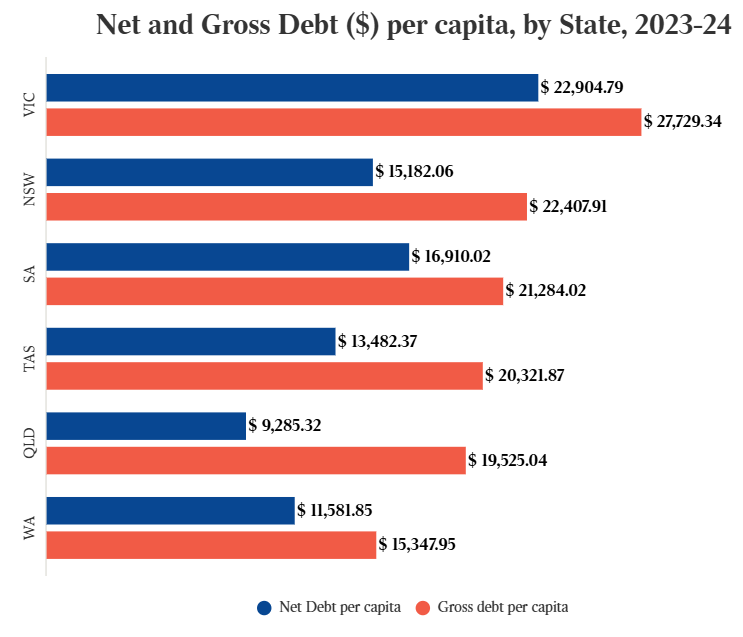
Per capita state debt was only $3,600 in Labor’s first budget in 2015. It has since climbed to $21,900 and is projected over the budget forward estimates to hit $25,500 by 2028-29.
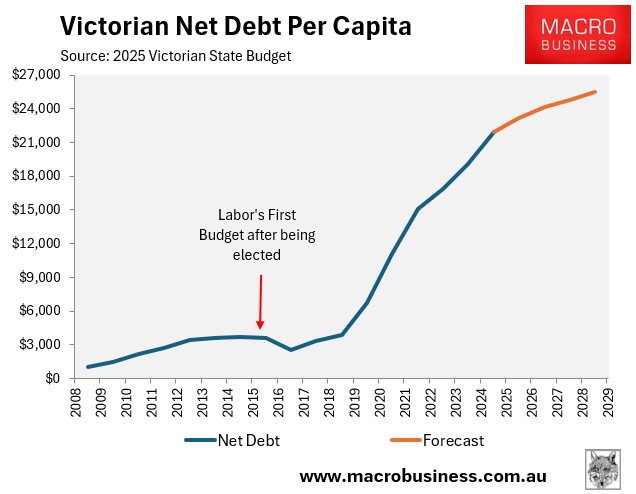
Victoria is currently paying $959 in annual interest costs per capita. By 2028-29, Victoria’s interest bill is projected to hit $1,391 per capita.
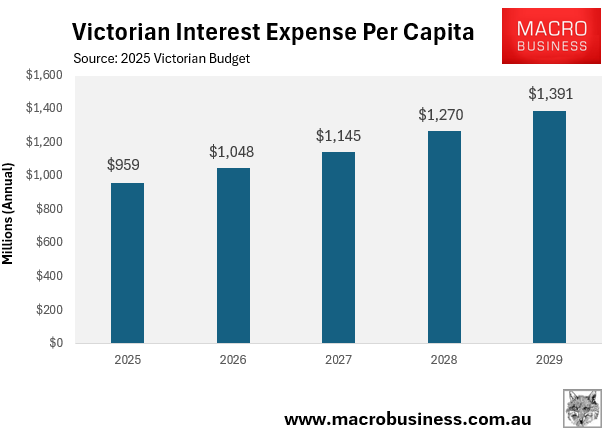
The two top international rating agencies, S&P and Moody’s, have warned that if debt levels are not rectified, Victoria’s credit rating may be further lowered.
Further downgrades appear unavoidable, given that the Victorian Budget for 2023-24 specifically stated that it expects the federal government to provide “a matching contribution” to the first stage of its Suburban Rail Loop (SRL) project, which the federal government has declined to fund beyond the previously committed $2.2 billion.

Source: Victorian Budget 2023-24
As a result, the Victorian government faces a $9.3 billion financing shortage for the SRL.
When Victoria’s credit rating is downgraded, interest payments on its ballooning debt will increase even more, demanding new tax increases and/or budget cuts to compensate.
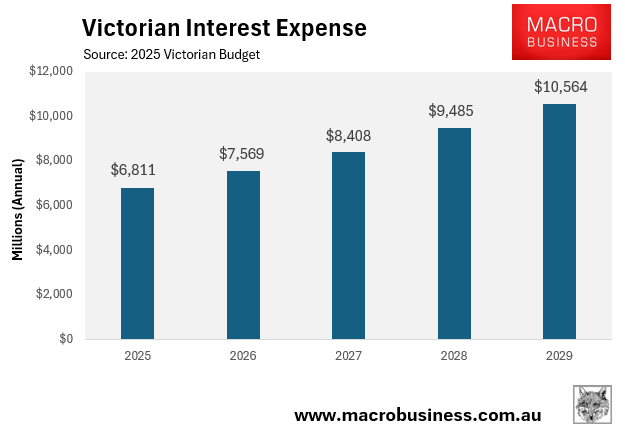
The Victorian government’s financial woes have spread to businesses across the state.
According to the Australian Securities and Investments Commission (ASIC), Victoria experienced the largest increase in insolvencies among the larger states in the 2024-25 financial year.
As illustrated in the table below, Victoria experienced a 48.2% annual increase in the number of businesses that either collapsed or had a financial controller appointed over the last financial year.
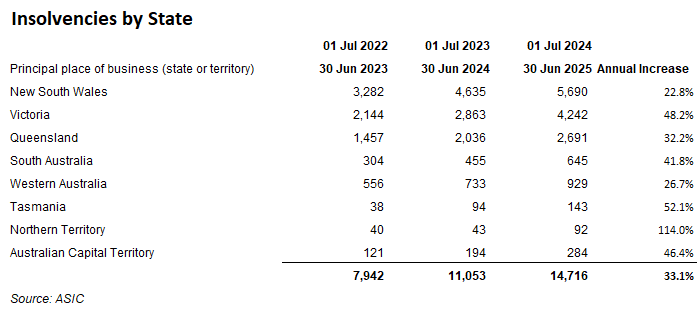
Victoria’s increase in insolvencies was significantly higher than NSW (22.8%) and Queensland (32.2%), as well as the national average rise (33.1%).
New company registrations per 1000 existing businesses are also significantly lower in Victoria than elsewhere.
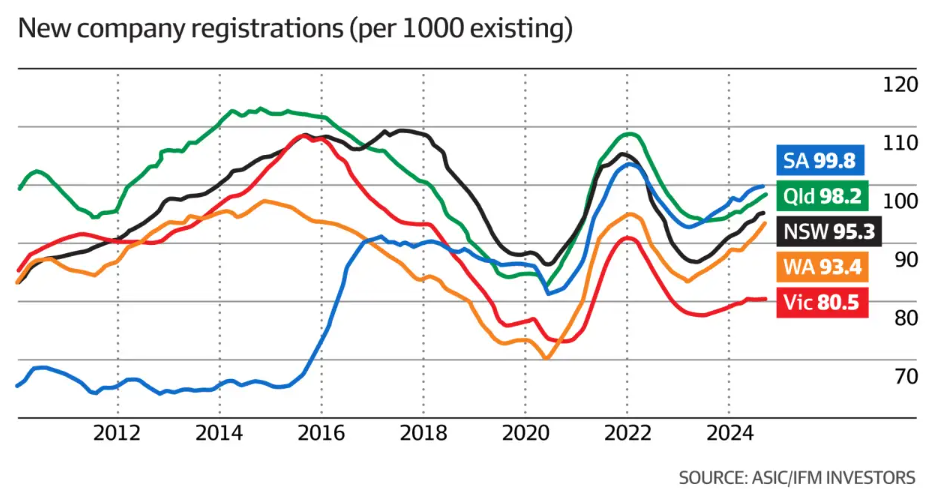
Business investment is also relatively depressed in Victoria, tracking significantly below that of NSW and in line with Queensland, despite Victoria’s substantially larger population and economy.
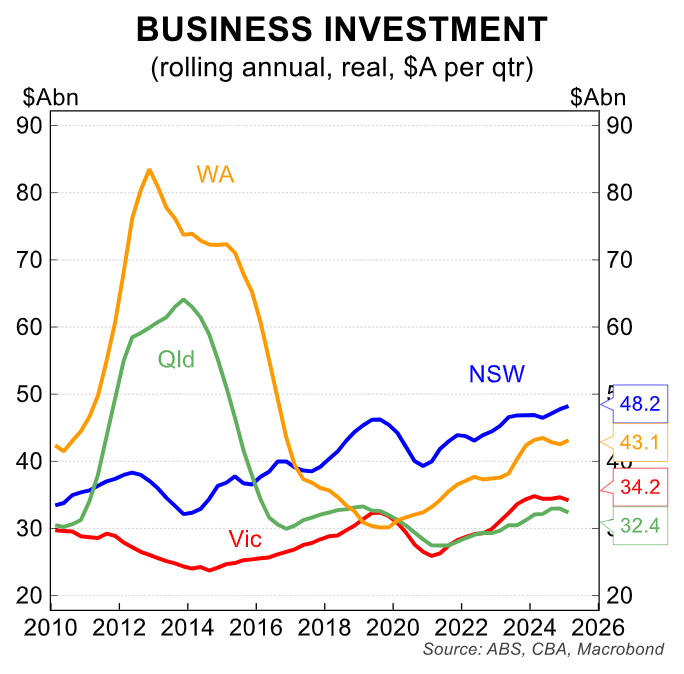
According to the Property Council of Australia, Melbourne’s CBD office vacancy rate was 18.0% in January 2025, the city’s highest since 1997 and the highest in the nation.
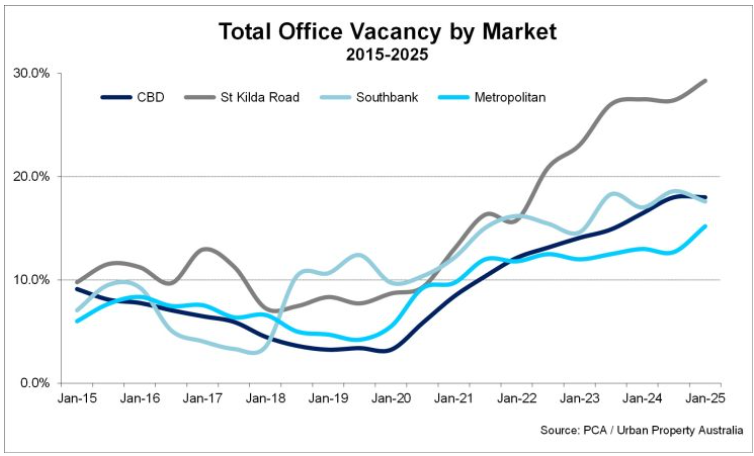
Finally, Victoria’s unemployment rate is the worst in the nation.
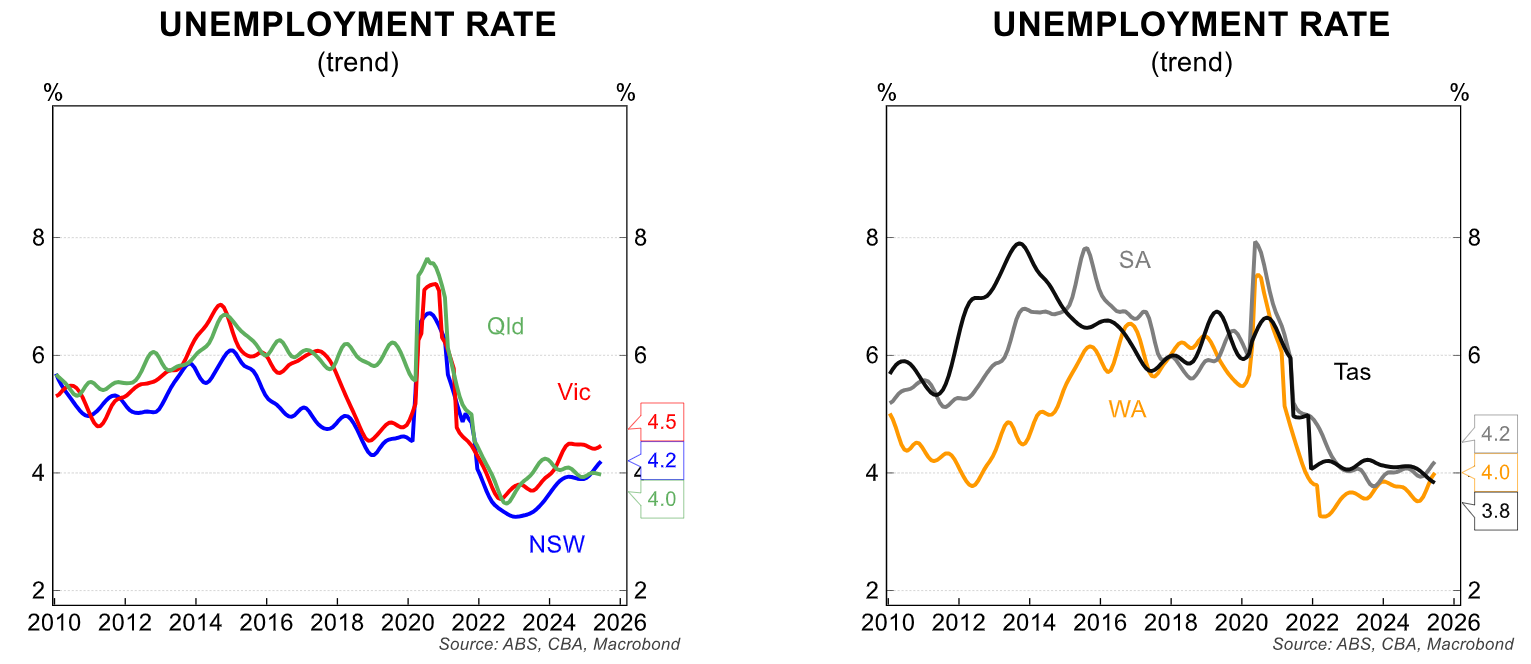
No wonder, then, that Victoria has experienced a sharp rise in business insolvencies.

